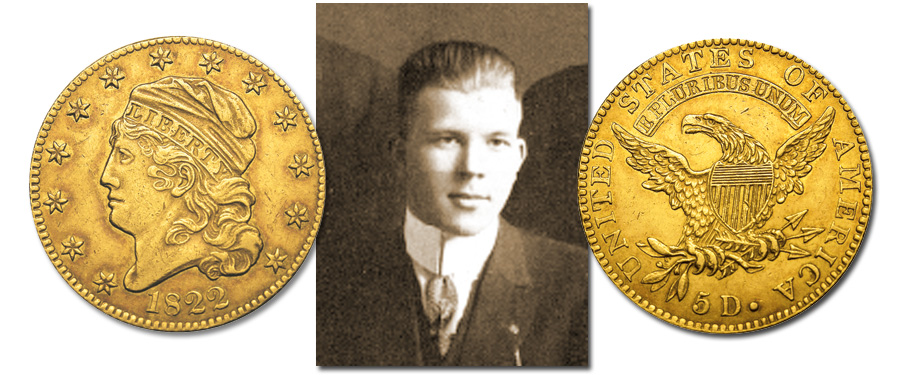
Question: Lately I have heard about the Lilly Collection and the National Numismatic Collection at the Smithsonian Institution in Washington, DC. Could you provide some basic information on that collection and how the coins ended up at the Smithsonian?
Answer: The Lilly Collection was the property of Josiah K. Lilly, Jr. of the famous pharmaceutical house in Indianapolis, Indiana. The following information is excerpted from Q. David Bowers’ book The 1822 Gold Half Eagle: Story of a Rarity, written in conjunction with the Stack’s Bowers Galleries presentation of the D. Brent Pogue Collection. Information on this book, as well as another companion book Treasures from the D. Brent Pogue Rare Coin Cabinet, is available at http://media.stacksbowers.com/poguecollection/pogue-the-books.html.
Josiah Kirby Lilly, Jr., was born in 1893. His father headed the pharmaceutical firm bearing the family name. In 1914 he graduated from the School of Pharmacy at the University of Michigan and entered the profession. From 1948 to 1953 he was president of Eli Lilly and Company. Later he was chairman of the board of directors. He married Ruth Marie Brinkmeyer. The couple had two children, Ruth Lilly (1915-2009) and Josiah K. Lilly III (1916-1995).
In 1951 Josiah K. Lilly contacted Stack’s in New York City. Gold coins were his interest, and he commissioned Stack’s to be his sole private agent to build a great collection. From that time until 1967, the firm was also his only advisor. Per his request, no information was given to the outside world. When Stack’s paid $60,000 to Amon Carter, Jr. for his 1822 half eagle in the late 1950s, they added a small commission and sold it to Lilly.
Josiah K. Lilly died on May 5, 1966, and left an estate appraised at nearly $30 million. Paul A. Rawley, vice-president of the Merchants National Bank & Trust Co. of Indianapolis, supervised the liquidation of the Josiah K. Lilly estate. He selected Abe Kosoff and Hans M.F. Schulman to appraise the collection of over 6,500 coins, including every 18th and 19th century United States gold issue by date and mintmark except the 1870-S $3, as well as an incredible holding of world gold coins. The appraisal report was submitted on September 5, 1967, and totaled $5,534,808. It was hoped that the collection would go to the Smithsonian Institution. A bill to accept this as a donation against taxes owed by the estate was filed in Congress.
The wheels of progress turned very slowly, but Congress eventually authorized the donation, and the collection was sent to the Smithsonian.





